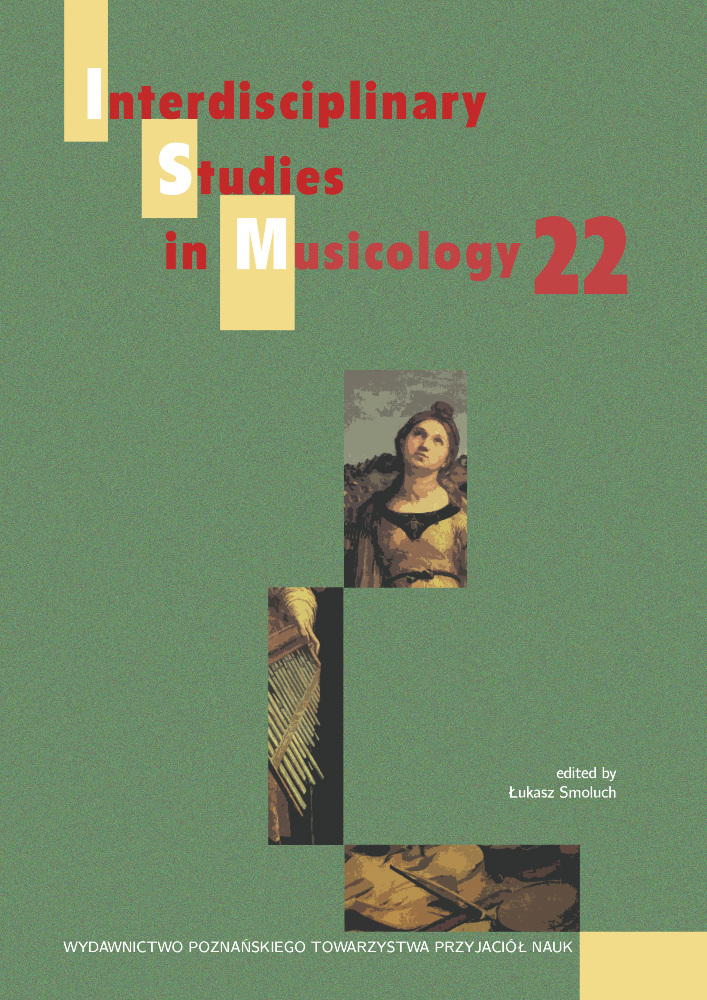Abstrakt
The following article is dedicated to the changes in folk dancing caused by the Covid pandemic and presents the author’s theoretical ideas on dancing in the digital world. The examples concern the phenomenon of dancing the Bulgarian way by Bulgarians and non-Bulgarians in urban settings, which the author has been studying for years and now diagnoses the emergence of a new virtual model and defines virtual authenticity. On the one hand it relates to the fluid notion of authenticity and organises self-reflection, free expression and rediscovering of one’s own identity in cyberspace. Distance-dancing the Bulgarian way provides a psychosomatic environment with previously unknown online effects and paradoxical dichotomies. In this notion of subjective authenticity, the memory of the social intimacy of circle dancing helps with the social intimacy in the online communication and supports the belief in the whole world as an open community. On the other hand, in addition to focusing on themselves through constrained aloneliness, dancers also engage with themes of the political past, cultural essence and national determination. The verbal discussions in social networks, at virtual folk dance camps and in university classes reveal the solid notion of authenticity. Transparency leads to more knowledge about Bulgaria and its interpretations; endless accessibility improves the correctness of the sources. Nevertheless, the new roles and hierarchies in digital Bulgaria provoke vulnerability and emotion. Recognising the phenomenon as persuasive and flattering communication, the increased verbal exchange connects both the individual and community aspects of authenticity. Even if the dance enthusiasts from Bulgaria and from abroad are not yet fully united in the so-called imagined or digital Bulgaria, the phenomenon participates more than ever in the idea of a global village. Distance-dancing the Bulgarian way creates third spaces of protection and resistance and establishes a global community that has a future beyond the pandemic.
Bibliografia
Assmann, A. (2006). Der lange Schatten der Vergangenheit. Erinnerungskultur und Geschichtspolitik [The long shadow of the past. Culture of remembrance and the politics of history]. Beck. DOI: https://doi.org/10.17104/9783406622625
Azuma, R. (1997). A survey of augmented reality. Presence: Teleoperators and Virtual Environments, 6(4): 355–385. DOI: https://doi.org/10.1162/pres.1997.6.4.355
Bendix, R. (1997). In search of authenticity: The formation of folklore studies. Madison: University of Wisconsin Press.
Bhabha, H. K. (1994). The location of culture. Routledge.
Burgess, J., Green, J. (2009). YouTube: Online video and participatory culture. Polity.
Cassirer, E. (1944) An essay on man. Yale University Press.
Coplan, R. J. (2019). Seeking more solitude: Conceptualization, assessment, and implications of aloneliness. Personality and Individual Differences, 148: 17–26. DOI: https://doi.org/10.1016/j.paid.2019.05.020
De Zengotita, T. (2005). Mediated: How the media shapes your world and the way you live in it. Bloomsbury.
Ferrara, A. (1998). Reflective authenticity. Rethinking the project of modernity. Routledge.
Fosler-Lussier, D. (2020). Music on the move. Univ. of Michigan Press. DOI: https://doi.org/10.3998/mpub.9853855
Foucault, M. (1993). Andere Räume. In K. Barck (Ed.), Aisthesis: Wahrnehmung heute oder Perspektiven einer anderen Ästhetik [Aisthesis: Perception Today or Perspectives of a Different Aesthetics] (pp. 34–46). Reclam.
Krastev, I. (2020). Ist heute schon morgen? Wie die Pandemie Europa verändert [Is today already tomorrow? How the pandemic is changing Europe]. Ulstein.
Kurdova, D. (2021). Post in the Facebook group „Sakrovishtnitsazabalgarski hora itantsi” from 18.05.2021.
McLuhan, M. (1994 [1964]). Understanding media: The extensions of man. MIT Press.
Meyer, A. (2021). Einrichtungen der Erinnerungskultur und die Umwertung der Musik [Institutions of remembrance culture and the revaluation of music]. Paper at the Symposium of the ICTM National Committee Germany, held in Berlin, October, 2021. [Manuscript].
Ricoeur, P. (2006). Wege der Anerkennung [Ways of recognition]. Suhrkamp.
Ronström, O. (2014). Traditional music, heritage music. In C. Bithell, J. Hill (eds.), The Oxford Handbook of Music Revival (pp. 43–59). DOI: https://doi.org/10.1093/oxfordhb/9780199765034.013.012
Oldenburg, R. (2010). Celebrating the third place. Inspiring stories about the great good places at the heart of our communities. Marlowe.
Panova-Tekath, G. (2010). Der Körper als symbolische Form [The body as a symbolic form]. Klartext.
Panova-Tekath, G. (2011). Die “Volks” – Choreographie als symbolische Kommunikation [The “folk” – choreography as symbolic communication]. Klartext.
Panova-Tekath, G. (2020). Four times ‘contra’: The Soviet, American, democratic, and emigrant models of dancing the Bulgarian way. Traditiones, 49(2): 65–84. DOI: https://doi.org/10.3986/Traditio2020490204
Panova-Tekath, G. (2021). За флуидността преди пандемията. Нови размишления върху моделите на танцуване по български, [On Pre-Pandemic Fluidity. An Analysis of the Models of Dancing the Bulgarian Way through a New Perspective]. Bulgarian Musicology, XLIV (4), 34–62.
Panova-Tekath, G. (2022). Виртуалният модел. Нови размишления върху етническото танцуване в интернет простанство то повремена Корона [The virtual model. New reflections on ethnic dancing in the cyberspace of Corona time]. Bulgarian Musicology, XLVI(2): 3–26.
Personal Communication (August 16, 1996). Ivanov, I. [Interviewee], Koprivshtitsa, Bulgaria.
Personal Communication (January 26, 2021). Interviewee xx. Thank you email to the teachers and
organizers of the Stockton 2021 Virtual Winter Folk Dance Camp, USA.
Personal Communication (February 27, 2021). Dragiev, M. [Interviewee], Krefeld, Germany.
Personal Communication (Oktober 10, 2022). Soenmez, Y. [Interviewee], Essen, Germany.
Rifkin, J. (2011). The third industrial revolution: How lateral power is transforming energy, the economy, and the world. Palgrave McMillan.
Sanders, C. (2020). Forced to move virtually. Dance Major Journal, 8(1): 1–4. https://escholarship.org/uc/item/3vb492vg DOI: https://doi.org/10.5070/D581049998
Sartre, J. P. (1965). Being and nothingness. N.Y. Philosophical Library.
Soja, E. W. (1996). Thirdspace: Journeys to Los Angeles and other real-and-imagined places. online disinhibition effect,Blackwell.
Suler, J. (2004). The online disinhibition effect. Cyber Psychology & Behavior, 7(3): 321–326. DOI: https://doi.org/10.1089/1094931041291295
Svensson, P. (2016). Big digital humanities. Imagining a meeting place for the humanities and the digital. University of Michigan Press. DOI: https://doi.org/10.2307/j.ctv65sx0t
Turino, T. (2008). Music as social life. The politics of participation. The University of Chicago Press.
Ungeheuer, G. (2010). Einführung in die Kommunikationstheorie [Introduction to communication theory]. Nodus Publikationen.
Licencja
Prawa autorskie (c) 2022 Gergana Panova-Tekath

Utwór dostępny jest na licencji Creative Commons Uznanie autorstwa – Bez utworów zależnych 4.0 Międzynarodowe.

